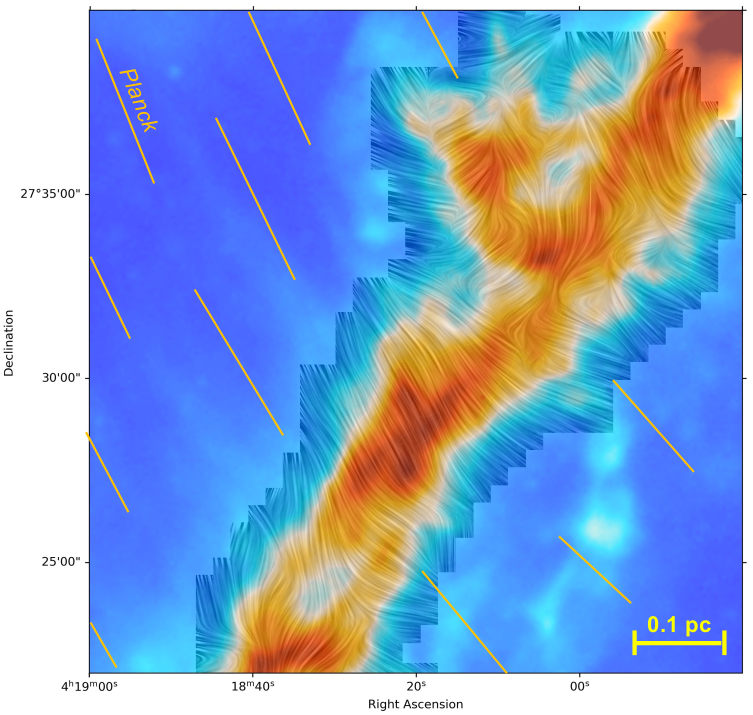| EPoS Contribution |
|
Understanding the dynamical state of star-forming filaments through magnetic field morphology
Philippe Andre CEA Paris-Saclay, Gif-sur-Yvette, FR | |
| Far-infrared and submillimeter imaging with Herschel and Planck have revolutionized our understanding of the link between the structure of the cold ISM and the star formation process, supporting a paradigm in which magnetized filaments play a central role. The dynamical state of molecular filaments and the detailed role of magnetic fields in the formation and fragmentation of filamentary structures remain poorly understood, however. Many star-forming filaments have thermally supercritical masses per unit length and this poses a problem since such filaments would naively be expected to undergo rapid radial contraction with time. Investigating how thermally supercritical filaments can maintain a typical inner width ~0.1 pc and fragment into prestellar cores instead of collapsing radially to spindles is crucial to understanding star formation. I will present new submm dust continuum polarization observations obtained with SOFIA/HAWC+ toward the Taurus/B211 filament, as well as preliminary results from the B-FUN large program on filaments with NIKA2-Pol on the IRAM 30m telescope, which shed some light on this issue. Based on the results, I will discuss how a combination of magnetic support and accretion-driven turbulence may allow thermally supercritical filaments to form stars. | |
 | |
| Caption: Magnetic field orientation around and within a small portion of the Taurus B211 filament, as traced by SOFIA/HAWC+ data at 214 μm on small scales (drapery) and Planck polarization data at 850 μm on large scales (orange vectors), overlaid on the Herschel Gould Belt survey image of the region at 250 μm (colorscale) (adapted from Li et al. 2022) | |
| Collaborators: H. Ajeddig, CEA Paris-Saclay, FR D. Arzoumanian, NAOJ Tokyo, JP Y. Shimajiri, NAOJ Tokyo, JP P.S. Li, UC Berkeley, US C.F. McKee, UC Berkeley, US |
Key publication
Suggested Session: Filaments |

